Every day is a historic day, as this column will attest. In the world of science, what has happened on this day? Here’s just a glimpse of some of the milestones, big and small, that have occurred on this date.
To start things off, here’s a little quiz:
What common item found in any toolbox, was patented by Solymon Merrick on August 17 in 1835? Don’t let it drive you “nuts”, the answer will appear at the end of the article.
In the meantime, here are some other happenings from this day in science history:
Events
1877
Asaph Hall discovers Mars’ moon Phobos
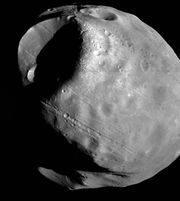
Phobos is the larger and closer of Mars’ two moons. Phobos was discovered by American astronomer Asaph Hall, Sr., at the US Naval Observatory in Washington, D.C. Hall also discovered Deimos, Mars’ other moon. The names, originally spelled Phobus and Deimus respectively, were taken from Book XV of the Iliad, where Ares summons Dread (Deimos) and Fear (Phobos).
Phobos is one of the least-reflective bodies in the solar system. Spectroscopically it appears to be similar to the D-type asteroids, and is apparently of composition similar to carbonaceous chondrite material. Phobos' density is too low to be solid rock, however, and it is known to have significant porosity. These results led to the suggestion that Phobos might contain a substantial reservoir of ice. Spectral observations indicate that the surface reolith layer lacks hydration, but ice below the regolith is not ruled out.
http://en.wikipedia.org/wiki/Phobos_(moon)
1915
Electric self-starter for automobile patented
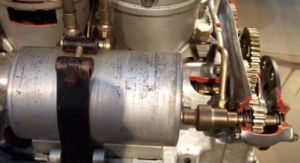
An automobile self-starter (commonly called "starter") is an electric motor that initiates rotational motion in a car's internal combustion before it can power itself. Both Otto cycle and Diesel cycle engines require the pistons to be moving before the ignition phase of the cycle. This means that the engine must be set in motion by an external force before it can power itself. Originally, a hand crank was used to start engines, but it was inconvenient and rather hard work to crank the engine up to speed.
While the need was fairly obvious, one that worked successfully in most conditions did not occur until 1911 when Charles F. Kettering of Dayton Electric Laboratories (DELCO) invented and filed for U.S. Patent 1,150,523 for the first useful electric starter. The starters were first installed by Cadillac on production models in 1912. These starters also worked as generators once the engine was running, a concept that is now being revived in hybrid vehicles.
http://www.google.com/patents?id=7TllAAAAEBAJ
http://http://en.wikipedia.org/wiki/Automobile_self_starter
1958
World's 1st Moon probe, US's Thor-Able, explodes at T +77 sec
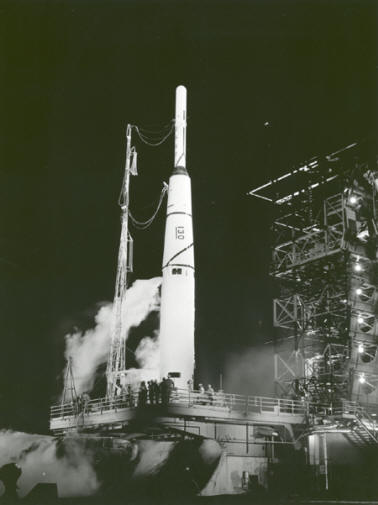
The Pioneer 0 (also known as Thor-Able 1) probe was designed to go into orbit around the Moon and carried a TV camera and other instruments as part of the first International Geophysical year (IGY) science payload. It was the first attempt by the USA at a lunar mission, and the first attempted launch beyond Earth orbit by any country.
It was launched on August 15, 1958 by the United States Air Force, but the spacecraft was destroyed by an explosion of the first (Thor booster) stage 77 seconds after launch at 16 km altitude, 16 km downrange over the Atlantic. Failure was suspected to be due to a ruptured fuel or oxygen line or a faulty turbopump gearbox. Erratic telemetry signals were received from the payload and upper stages for 123 seconds after the explosion, and the upper stages were tracked to impact in the ocean. The original plan was for the spacecraft to travel for 2.6 days to the Moon at which time a TX-8-6 solid propellant motor would fire to put it into a 29,000 km lunar orbit which was to nominally last for about two weeks.
Pioneer 0, 1, and 2 were the United States' first lunar attempts. These identical spacecraft, which all failed to meet their lunar objectives, were followed by Pioneer 3 and 4, which succeeded in becoming America's first successful lunar missions.
http://msl.jpl.nasa.gov/Programs/pioneer.html
1966
Pioneer 7 launched into solar orbit
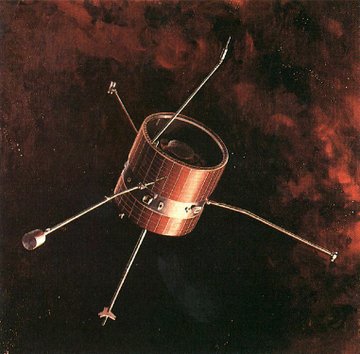
Pioneers 6, 7, 8, and 9 were created to make the first detailed, comprehensive measurements of the solar wind, solar magnetic field and cosmic rays. They were designed to measure large scale magnetic phenomena and particles and fields in interplanetary space. Data from the vehicles has been used to better understand stellar processes and the structure and flow of the solar wind. The vehicles also acted as the world's first space-based solar weather network, providing practical data on solar storms which impact communications and power on Earth.
Identical to Pioneer 6, Pioneer 7 was put into heliocentric orbit at 0.814 x 0.985 AU to study the solar magnetic field, the solar wind, and cosmic rays at widely separated points in solar orbit. On 7 September 1968, the spacecraft was correctly aligned with the Sun and Earth to begin studying Earth's magnetic tail. In 1977, eleven years after its launch, Pioneer 7 registered the magnetic tail 19.3 million kilometers out, three times further into space than recorded previously. On 20 March 1986, the spacecraft flew within 12.3 million kilometers of Halley's Comet and monitored the interaction between the cometary hydrogen tail and the solar wind.
As with Pioneer 6 and Pioneer 8, NASA continues to maintain intermittent contact with Pioneer 7, more than thirty years after its mission began. On 31 March 1995, for example, the plasma analyzer was turned on during 2 hours of contact with the ground.
http://en.wikipedia.org/wiki/Pioneer_6,_7,_8_and_9
http://solarsystem.nasa.gov/missions/profile.cfm?MCode=Pioneer_07&Display=ReadMore
1970
Venera 7 launched by USSR for soft landing on Venus
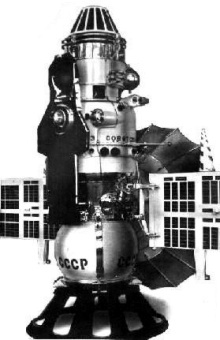
On August 17, 1970, the Soviet Union launched Venera 7, the first spacecraft to transmit data from another planet. In December 1970 Venera approached Venus after a rather uneventful flight. On December 15, the Venera-7 lander separated from its cruising stage and plunged into the planet's atmosphere on the dark side of the planet, which was facing Earth. To their horror, the scientists on the ground discovered that due to malfunction of a mechanical switch on the probe, the spacecraft had lost the capability to transmit all but a single channel of data. Luckily, this single switch stuck on a temperature reading, which enabled the scientists to gather temperature data and also estimate pressure data, since the two are related.
As Venera 7 descended into the Venusian atmosphere, it continued transmitting temperature data down to the altitude of around 32 feet (10 meters). Then another disaster struck. At this point, the probe's parachute was lost and the spacecraft plummeted toward the surface of Venus.
The mission was seemingly over -- the Russian deep-space control station in Crimea was receiving nothing but background noise from the emptiness of space. Lavochkin engineers were even more stunned when a week later, the experts from the Moscow's Institute of Radio Electronics told them that they had been able to discern Venera 7's signal from the background radio noise recorded after the landing.
After deciphering a very weak signal, the scientists confirmed that for around 23 minutes after hitting the surface of another world, Venera 7, despite the fact it was laying on its side in darkness with its antennas pointed away from Earth, had continued transmitting temperature data.
The hardy spacecraft had delivered the first measurements conducted directly on the surface of another planet. The data confirmed what has already been speculated about the "weather" on Venus -- the surface temperature was 460 to 475 degrees Fahrenheit (237 to 246 degrees Celsius) -- enough to melt such metals as lead or zinc. The atmospheric pressure at the surface turned out to be around 93 atmospheres, comparable to an ocean depth on Earth of around 2,625 feet (800 meters).
http://www.space.com/news/spacehistory/venera7_000817.html
1978
1st manned balloon crossing of Atlantic Ocean (Eagle II)
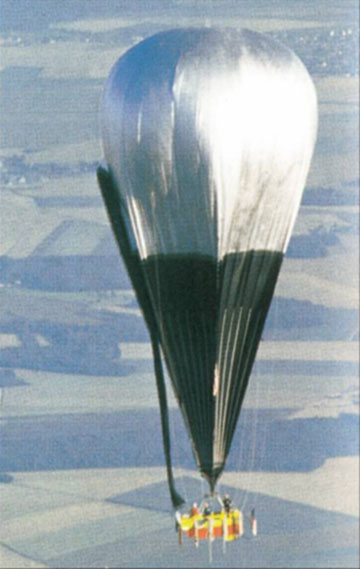
August marks the 30th anniversary of Double Eagle II, the first successful trans-Atlantic balloon flight. One of the world's most dangerous aviation challenges, 14 previous attempts had failed with the loss of five lives: Malcolm Brighton with Rodney and Pamela Anderson in Free Life, 1970; Tom Gatch in Light Heart, 1974; and Bob Berger, the same year, in Spirit of Man.
Double Eagle II, piloted by Ben Abruzzo, Maxie Anderson, and Larry Newman, became the first balloon to cross the Atlantic Ocean when it landed on August 17, 1978 in Miserey, France near Paris, 137 hours 6 minutes after leaving Presque Isle, Maine.
It can be regarded as a successful crossing at the point that the Double Eagle II crossed the Irish coast, on the evening of August 16th, an event that Shannon Airport notified the crew about when it happened. Newman had intended to hang glide from the balloon to a landing, while Anderson and Abruzzo continued to fly. However, the hang-glider had to be dropped as ballast earlier on the 16th.
While flying over France, they heard by radio that authorities had closed Le Bourget Airfield, where Charles Lindbergh had landed. The crew declined the offer as it would be too risky (crew and citizens below) now to pass over the suburbs of Paris. They were also running out of ballast. They landed in a field of barely 60 miles (96 km) northwest of Paris. Television images showed a highway nearby, its shoulders and outer lanes crowded with stopped cars, people sweeping across the farm field to the landing spot. The gondola was protected, but most of the logs and charts were swiped by souvenir hunters.
The trio and their wives returned to the United States aboard the Concorde supersonic. The trip was accommodated by Air France at no charge.
http://www.balloonlife.com/publications/balloon_life/9801/9808/deIIoverview.htm
Births
1601
Pierre de Fermat (Born Aug. 17 1601; died Jan. 12, 1665)
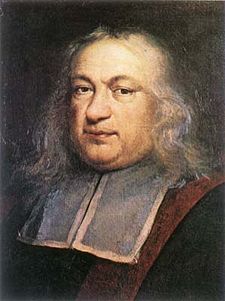
Pierre de Fermat is one of the top ten greatest mathematicians in history, and often called the founder of the modern theory of numbers. Alongside Blaise Pascal, he established the foundations of probability theory, which is the mathematics of gambling, risk and change. Also, when Newton was asked where he got the idea of calculus from, he credited “Monsieur Fermat’s method of drawing tangents”. Fermat anticipated differential calculus with his method of finding the greatest and least ordinates of curved lines.
But Fermat’s greatest ideas are in the area of number theory, a subject which has virtually no practical applications. Number theory is the purest form of mathematics, concerned with the study of whole numbers, the relationships between them, and the patterns they form.
Fermat created the infamous Last Theorem. In essence Fermat invented a problem, then solved it, but he never wrote down the solution. In the margin of a notebook he scribbled:
"I have a truly marvellous demonstration of this proposition
which this margin is too narrow to contain..."
This was typical of Fermat. He was a mischievous mathematician, who was forever tormenting his rivals. René Descartes called Fermat ‘a braggart’ and the English mathematician John Wallis called him ‘that damned Frenchman’.
Fermat wrote several other notes, saying things like 'I can prove such and such but I have to feed the cat', or 'I can solve a particular equation but I have to wash my hair', and all of these notes were discovered after his death. Mathematicians across Europe studied Fermat’s observations and attempted to rediscover the proofs behind the theorems. Over the course of the next century, each theorem was proved, except for the one, which would become known as Fermat’s Last Theorem.
http://www.simonsingh.net/Pierre_de_Fermat.html
http://www.simonsingh.net/What_is_the_Theorem.html
1798
Thomas Hodgkin (Born Aug. 17, 1798; died Apr 5, 1866)
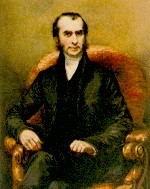
A British physician considered to be one of the most prominent pathologists of his time and a pioneer in preventive medicine. He is now best known for the first account of the malignant disease of lymph tissue that bears his name, Hodgkin's disease. Hodgkin's work marked the beginning of times when a pathologist was actively involved in the clinical process.
Hodgkin described the disease that bears his name in 1832, in a paper titled On some morbid appearances of the absorbent glands and spleen, published in Medico-Chirurgical Transactions, the journal of the Medical and Chirurgical Society in London.
In 1865 another British physician, Samuel Wilks, described the same disease picture, independently of Hodgkin and with greater precision. As he later became acquainted with the work of Hodgkin, he recognized the latter’s priority and named the condition for Hodgkin. Since then Hodgkin’s disease has become one of the best known of all medical eponyms
Although greatly popular in London, Hodgkin was denied a professional advancement. He became more and more disappointed by medicine, and eventually became an Oriental traveler. He devoted much of his life to philanthropic causes such as the relief of suffering in under-developed countries and the freeing of slaves.
http://www.whonamedit.com/doctor.cfm/1495.html
1870
Frederick Fuller Russell (Born Aug. 17, 1870; died Dec. 29 1960)

Brigadier General Frederick Fuller Russell was a U.S. Army physician who developed an American typhoid vaccine in 1909. In 1911, the typhoid vaccination program was the first immunization given to an entire army. It eliminated typhoid as a significant cause of morbidity and mortality among U.S. military personnel.
After graduating from Cornell University in 1891, Russell received his Doctor of Medicine from Columbia University in 1893 and his Doctor of Science from George Washington University in 1917. In 1898 he was commissioned as first lieutenant in the Medical Corps of the U.S. Army.
It was during his time as a Medical Corps officer that he began his research into the inoculation of soldiers against typhoid. In 1908 Surgeon General O'Reilly sent Russell to England to observe the work of Sir Almorth Wright, Professor at the Royal Army Medical College, who had been experimenting with a method of prophylaxis with killed culture of typhoid organisms to immunize against the disease. Upon Russell's return he submitted a report on Wright's research, which O'Reilly considered as "a very valuable treatise on the epidemiology of this disease."
As a result of the report Russell was assigned the duty of implementing an immunization program within the U.S. Army. In 1910 he inoculated his first group of volunteers and by 1911 vaccination became compulsory. From a morbidity of 173 cases in 1910, Russell was able to reduce the total to nine cases in 1912 with only one death.
http://en.wikipedia.org/wiki/Frederick_F._Russell
1906
Hazel Gladys Bishop (Born Aug. 17, 1906; died Dec. 5, 1998)
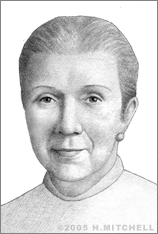
Long-lasting lipstick was one of the first modern cosmetics of its kind, one that took advantage of advances in chemistry and was designed with improved customer experience in mind. The product was the brainchild of entrepreneur, inventor and chemist Hazel Gladys Bishop.
Born in Hoboken, New Jersey, Bishop completed a bachelor's degree in chemistry at New York's Barnard College in 1929 and took graduate courses evenings at Columbia University. In 1935 she took a job as an assistant in a dermatological laboratory at the College of Physicians and Surgeons where she worked with A.B. Cannon, who, with Bishop's help, would later launch the hypoallergenic cosmetics line known as Almay. Seven years later, in 1942, she began working as an organic chemist for the Standard Oil Development Company, designing fuels for airplanes during World War II. In 1945 she joined the Socony Vacuum Oil Company where she did similar work until 1950.
All the while Bishop, inspired by her experience working with Cannon, had been conducting experiments of her own in her spare time. Bishop's personal experience as a woman in the workforce at a time when this half of the population was just beginning to take on full-time work outside the home in great numbers gave her a lucrative idea. She thought a smudge-proof, long-lasting lipstick that wouldn't come off on coffee cups, shirtsleeves, and the like was something the professional woman needed and would appreciate.
She began working with staining dyes that would actually stain color into the skin, mixing them with oils and molten wax. The product was ready for launch by 1949. In 1950 she raised some capital and established Hazel Bishop, Inc. to manufacture "Lasting Lipstick." She enlisted the help of advertising pro Raymond Spector to help her launch the product in exchange for stock in her company. He helped her form the idea of calling it "kissable" lipstick, an idea that proved successful: Bishop's Long-Lasting Lipstick was an immediate success and rival cosmetics companies soon followed her lead with copycat products. By 1953, the product was making Hazel Bishop, Inc. more than $10 million per year.
Bishop served as president of the company until 1951 after an unfortunate dispute between her and Spector resulted in a lawsuit and the loss of her position. She moved on to start another consumer products company, and then later found success as a financial analyst; a pharmaceutical stock consultant; and then finally accepted an invitation in 1980 to take on the role of Revlon Chair of Cosmetics Marketing at New York's Fashion Institute of Technology. Throughout her career, she continually helped to drive home the point that chemistry was of utmost importance when it came to the development of new cosmetics.
She died on December 5, 1998, in Rye, New York at the age of 92.
http://web.mit.edu/invent/iow/bishop.html
Deaths
2000
Robert Rowe Gilruth (Born Oct. 8, 1913; Died Aug. 17, 2000)
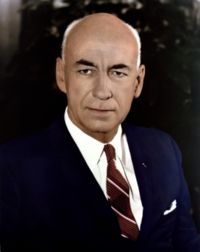
Robert Rowe Gilruth was an American aerospace scientist, engineer, and a pioneer of the Mercury, Gemini, and Apollo space programs. He developed the X-1, first plane to break the sound barrier.
Gilruth's boyhood hobby was designing and building rubber-band powered toy airplanes, and at the University of Minnesota he studied under Jean Piccard. He worked twenty years at NASA's predecessor, the National Advisory Committee for Aeronautics, where he supervised free-flight experiments with high speed rocket-powered models at transonic and supersonic speeds, and conducted research on optimum wing design.
He jumped to NASA when it was formed in 1958, and among NASA insiders he was sometimes called "godfather to the astronauts". Gilruth organized NASA's space task group, which evolved into Project Mercury and, with Gilruth in charge, launched Alan Shepard into space as America's first astronaut in 1961. Gilruth was the first director of NASA's Manned Spacecraft Center, from 1962-72, overseeing the Gemini and Apollo missions culminating in Neil Armstrong and Buzz Aldrin's walk on the moon in 1969.
His last work at NASA was early planning for the Apollo-Soyuz mission of July 1975. An amateur sailor, he designed and built his own boat, and in retirement he invented a sailing hydrofoil system for high-speed surface-skimming.
http://www.nndb.com/people/849/000169342/
And the answer to today’s quiz?
The common item found in every toolbox, patented by Solymon Merrick on August 17, 1835:
The Wrench
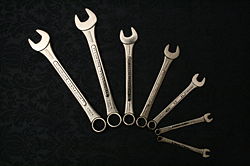





Comments